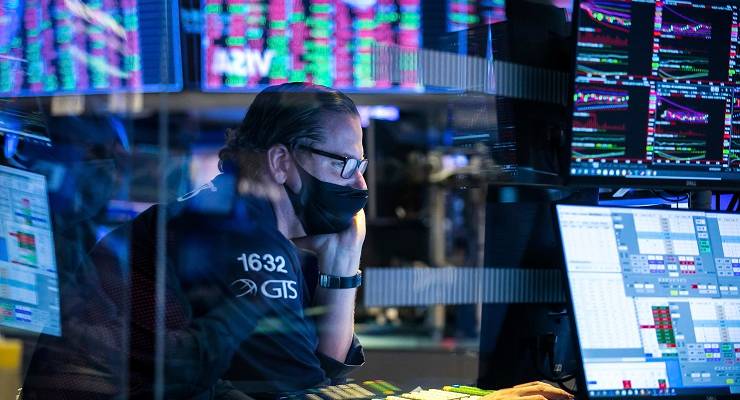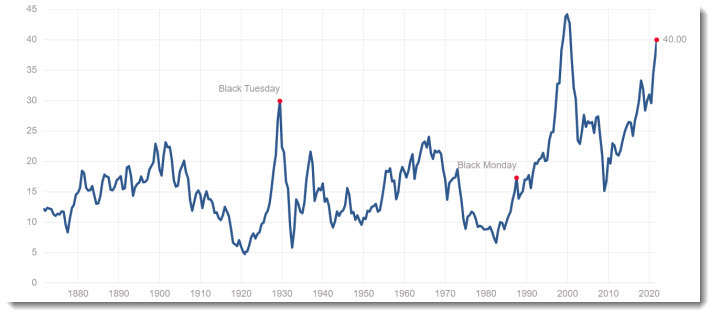
In 1999 almost everyone (other than the gullible or greedy) figured the bubble would burst at some point — but as Citibank’s later disgraced CEO Chuck Prince would note (in relation to a different) bubble: “As long as the music is playing, you’ve got to get up and dance.”
Back then the heroes were AOL, Amazon, Webvan and Microsoft (note: two of those are among the world’s most valuable businesses today), but the mania affected the entire market. The fall was swift. The tech-laden Nasdaq dropped from 5047 in March 2000 to 1139 in September 2002. That’s a 77% drop — for an index. The Dow Jones dropped a more pedestrian but still painful 20%.
Fast-forward two decades and the mania is even more manic.
Although the first internet boom involved many businesses that didn’t yet have revenue (speculators would purchase companies that had lots of clicks), at least the cost of money was semi-rational — interest rates in 1999 were about 8%. Today, coordinated actions from inept (and possibly corrupt) central banks have meant that real interest rates in Europe, the United States and Australia remain below zero (in some places the nominal rates are less than zero, so people are paying banks to hold their money).
That has led to an “everything bubble” which has impacted almost every asset class, from stocks to property to fine art. If you’re purchasing almost any asset now, you’re essentially betting that central banks are (1) able to influence interest rates in the medium term, which is highly debatable, and (2) can maintain record low interest rates despite inflation starting to resemble Germany in the early 1920s.
Why are the world’s two most valuable companies, Microsoft and Apple, trading on P/E ratios of 37 and 27 respectively? Because their income streams (which are considered to be almost recurring) are effectively a de facto for government bonds, which provide a near zero return.
In the past year the Nasdaq is up 34%, the S&P500 is up 34%, crude oil is up 109%, coal is up 117% and Bitcoin is up by more than 300%. The Australian S&P200 is a relative laggard — up only 21%.
How overpriced is the US market in relative terms? There are two indicators which tend to provide a good understanding. First is the CAPE Shiller Index, which looks at a 10-year average of price earnings multiples (adjusted for inflation). The index has only hit 40 once previously, in 1999. It recently hit 40 again.

The other useful long-term measure is Warren Buffet’s GDP to Market Capitalisation Index (he uses the Wiltshire 5000, which is a very broad measure of listed US businesses). The index compares the total value of all publicly traded stocks in a country, divided by that country’s gross domestic product.
The logic is sound — companies reflect economic output, the value of capital stock in an economy will eventually reflect production levels. If share prices get too high relative to GDP it’s like ringing a bell. How is that all going? Well, the historical average for Buffet’s index is 75%. We’re currently at 200%, a level never before reached. There’s more chance of my five-year-old daughter being accepted into Hogwarts next year than this ending well.

The pandemic has exacerbated underlying problems in the global economy. The EU and US (not to mention Australia) cranked up the virtual printing presses to fund shutting down their economies during COVID. Regardless of your view on the global pandemic response, the direct effect has been to create the greatest asset bubble the world has ever seen. This has served to massively enlarge the fortunes of the rich, who own almost all Australia’s stocks and property.
Case in point: the total wealth of the The Australian Financial Review’s annual rich list has increased to $479.6 billion in 2021, up from $424.6 billion six months earlier and almost $200 billion more than in 2018. During that period Australia’s GDP has barely increased. So the rich have got far richer, and that means everyone else has got poorer (they just don’t realise it yet because house prices are nominally higher).
The main culprit in Australia’s asset bubble and unfolding economic disaster is the Reserve Bank, which maintains a net zero interest rate policy and a laughable commitment to not raise rates despite the clear and present inflationary threat, Governments of all persuasions are also complicit. The federal government’s inept JobKeeper donation to the rich listers may be the most public example, but almost every tax loophole (like the principal capital gains tax exemption or negative gearing) is aligned to ensuring the rich get richer, while the young and poor continue to get screwed.
Unless you believe that this time is really different (hint: it never is), there will inevitably be an almighty reckoning. And it won’t be pretty.








BRACE. BRACE. BRACE.
Like everything else, Australian Markets follow the US. One exception is AustralianProperty which is so overvalued it makes Australian Equities look like a bargain. We escaped the GFC relatively unscathed overall but the Australian obsession with Property will be our undoing. Rate rises are inevitable and the recent moves by APRA confirm same. It is not going to be pretty.
Corruption, greed, exploitation and rorting abound in this free-market, “Sodom and Gomorrah” capitalist system, especially at the economic and political level. The very nature of this system strongly encourages, catalyzes, enables and certainly rewards this kind of egregious behavior.
Reading so many recent articles in Crikey only causes me to ask, “Where are Lenin and Marx when we need them!!??”
At least ‘the Cities of the Plain by the Bitter Sea’ were cleansed by a meteor airburst – it would take an entire shower, or several, to rectify our current imbroglio.
Sometimes the collapse of such an asset bubble is metaphorically described as the end of a drunken party leading to a hangover. The longer the party continues, the worse the eventual hangover. This time there has been such a concerted effort to propel the party onwards that the final results might be nearer acute and potentially fatal alcohol poisoning than a mere hangover. The government and banks know this, they long ago lost the nerve to face the immediate consequences of stopping the party, so all they do is continue trucking in more alcohol. Let us eat, drink and be merry…
“…for tomorrow we die”.
Good analogy, as I swirl my Elisabethan.
I agree with the premise of the article. What I was also hoping to read was “what you should do to protect your cash and assetts when the bubbles burst”.